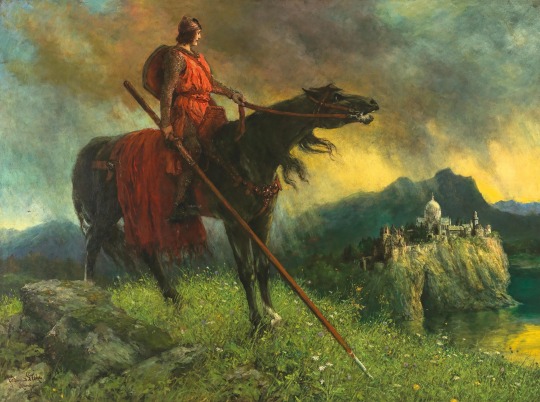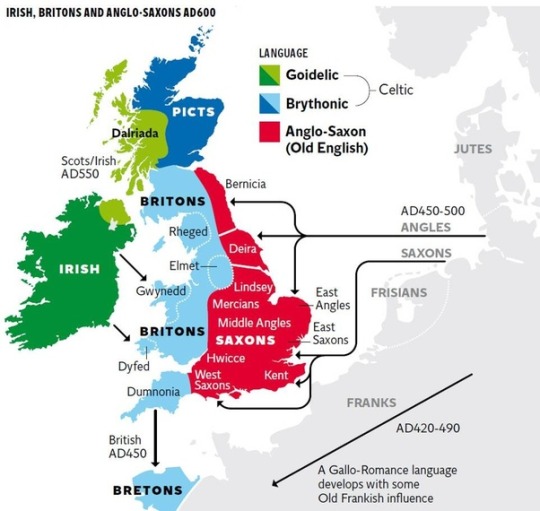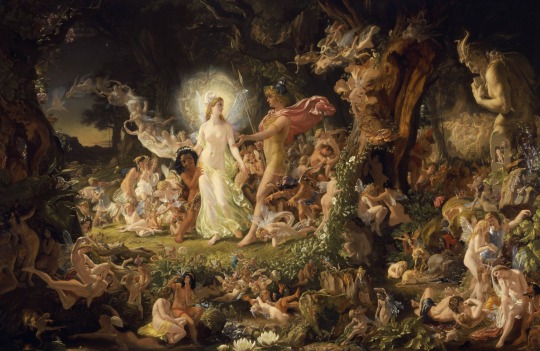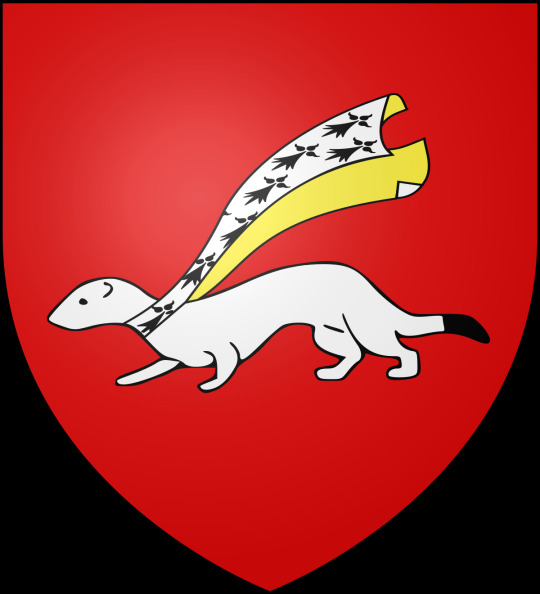Text
Some thoughts about that post is that tuunbaq definitely isn’t a real cultural Inuit figure but is based on tupilak, something that could broadly be described as a manufactured spirit. So much of Inuit religious custom has been lost through Christian missionary work as well as the customs varying from region to region that it was unclear to Europeans who inquired about tupilak whether the carved icons were a representation of the spirit or literally how the spirit was manifested through the act of creation. (See the carved bear along side the man)
The tupilak was evoked as a revenge spirit and it’s creation was taboo because the intention was for it to be used to kill. Nive Nielsen spoke in and interview about Tuunbaq being “creations of the shaman, and they use them to protect themselves and their families” so in this way I think it’s very similar to tupilak. But then referring to its role with the show, Tuunbaq does this quite effectively, as soon as Silna’s father is shot it appears and rips apart the nearest man holding a gun, then it goes after Bryant the man that actually shot her father, then disrespects Franklin in the same way his creator was disrespected. It’s attacks aren’t random it’s not an animal that hunts for food. There is a devolution in its behaviour as it’s ties with Silna become thinner but it’s the only tie she has to her father, it becomes more irrational but it keeps bringing her seal meat, she’s scared of it and she respects it. It kills the men because they want to hurt her, it is a form of protection but it’s unstable and dangerous.
She does appear to be able to briefly bind herself to it, as Tuunbaq only attacks the camp after Silna has left and the family has been massacred. It’s as if its judged that after this act of violence Silna probably won’t care if some of these horrible men die. Once they’re separated again Tuunbaq is almost completely bestial “sick from what it eats”. Within the context of the show we can infer that it is becoming more and more like the men it hunts, it eats without needing food, it claims territories it can’t possibly survive in. It can be an extended metaphor for colonialism as well as a creature based on Inuit culture.
344 notes
·
View notes
Note
Do you have any tips for researching historical fashion? I am very interested in finding out about many different eras of fashion for many cultures it’s just that whenever I try I get stuck and am not sure where to find any interesting resources. Have a wonderful day!
Sorry this took so long. I almost wrote a book last time and decided its unreadable for anyone other than me. So here u go with the more general and better formatted tips:
• start simple! Get to know the place youre interested in. Get to know the time period as a whole. Fashion is a broad topic that varies from place to place, so its better to start with the general ideas, and get more into smaller details from that; most of the time that basic information is easily accesible online and in various historical fashion books im sure you can find in your local library (i know its hard to recognize which sites and books are actually knowledgable and which are not; usually i just do a background check on the author and see what sources they use in their work. But even with that, dont get too attached to the information you gain; sometimes it will be correct, and sometimes it will prove false, and thats okay. Thats why youre learning and thats why you have to compare different sources to each other)
• The further down the timeline you go, the more "local" fashion gets, and looking for clothing examples gets harder, so keep that in mind; more often than not, if you want to find something from a different culture than yours, you have to get friendly with google translator, especially if youre looking for way, way older clothes.
• the reason for that is, you will not only have to check foreign sites and blogs, but also foreign archives; and these are a hell to navigate. Theyre also one of the best things to ever exist on the internet. Theres plenty of free, publicly avilable ones, hosted by museums, libraries, universities or just existing by themselves, and they have everything; scans of books and fashion magazines, fashion plates, old photos, drawings and sketches, everything. Research papers are great too
• speaking of art; its always good to look for paintings and artists of that era and culture! I dont think i need to say more on that. Books are great too, though i mostly use them for other history related stuff, since they usually dont describe fashion much
• overall, learning fashion history is a long and often slow process... id love to give you examples of sites, blogs and everything else i use, but its all in polish and very focused on 19th century; which will be useless, unless its something youre interested in. So its very much a thing you need to look for yourself... i know there are lots of historical fashion youtubers, but i dont personally watch any of them; from what ive seen though i trust that they know what theyre talking about, esp the ones that actually wear and sew historical clothes and reconstructions... theyre often focused on the west, though. At least the ones i know of; feel free to recommend some in the notes. In general feel free to post more tips and sources in the notes
Hope this can help you somehow. I dont feel like its very helpful, but its the best i can offer, im afraid. My "area of expertise" is not only european, and therefore easier to research, but also written in my mother tongue; i do however often look for foreign folk clothes, so most of those tips were written from that experience. Sorry if this isnt what you looked for
117 notes
·
View notes
Text
And another thing! Literally any queer story that takes place during the colonial age would have a huge gaping hole in it if it didn't have anticolonialism as a theme. Especially one that centers indigenous people. Like the reason that every culture had their own concepts of gender until something happened and then suddenly the gender binary was ubiquitous is because western European colonial powers made their view of gender the only acceptable one as part of christianizing and colonizing the world. You're not gonna have a show set in 1717 in the Caribbean where the love interest is a gay Maori man and the main deuteragonist is a non-binary mestizo catholic and just skip over colonialism. Like these are exactly the people who western gender roles are being forced on at fucking gun point during this era. Jim and Ed are both mixed race characters who's gender and sexual identities are in active defiance of the colonial powers that be. And this is the fucking Stede Ed and Jim show.
And there's something to be said for the fact that Stede's toxic masculinity plot line is internalized and Ed's struggle with toxic masculinity is largely external in the form a white guy who rubs elbows with the British Navy when Ed doesn't behave to his standard of masculinity. That choice didn't come out of nowhere and it shows a deep understanding of where homophobia comes from. That's not to say that precolonial communities of color were paradise for people that we today would consider queer but the rich tapestry of sexual and gender expressions that existed in those communities were erased in the name of colonialism. That's going to affect literally any queer person at the time when OFMD is set. These two things are inextricably linked.
Like when David Jenkins says a lot of what we're taught about being men is wrong, motherfucker who taught us what a man was. Who taught Ed what a man was? Who taught Stede what a man was for that matter? It's the white dad with the English accent who is violent (derogatory) and overbearing.
Like you get what I'm saying right? Like it's a silly little rom com but also it must necessarily be that deep because of who these characters are and when and where they exist.
294 notes
·
View notes
Text




Important #PSA for those who may be sharing medieval owl memes for #Superb_Owl Sunday as these owls (especially #1) often show up in them, and unfortunately there are unfunny reasons why they look the way it do. :/
#DYK that some medieval bestiary owls carry antisemitic context that may not be obvious to the casual modern viewer? Sadly, these nocturnal owls were used to symbolize Jews living in darkness and rejecting the light of Christ.
Features to watch for include: anthropomorphized faces with beaks made to resemble hooked noses; owl "horns" drawn like devil horns (and the horned hats some Jews had to wear); and "mobbing" by other birds (a real-life behavior, but also used to symbolize attacking a sinner).
For more info:
1. Miyazaki, Mariko. "Misericord owls and medieval anti-Semitism." In The Mark of the Beast: The Medieval Bestiary in Art, Life, and Literature, pp. 23-43. Routledge, 2013.
2. Greatley-Hirsch, Brett. "From Jew to Puritan: the emblematic owl in early English culture." In ‘This Earthly Stage’: World and Stage in Late Medieval and Early Modern England, pp. 131-172. Brepols, 2010. PDF available online.
Image sources:
British Library, Harley MS 4751 (Harley Bestiary), folio 47r
Westminster Abbey Library MS 22 (Westminster Bestiary), f. 40
Aberdeen University Library, Univ. Lib. MS 24 (Aberdeen Bestiary), f. 50r
Bibliothèque Nationale de France, fr. 1951 (Bestiaire d'amour rimé), f. 15v
131 notes
·
View notes
Text
Just amazing to see people claim that the discourse around cultural Christianity is very America-centric, like "ah yes, America is very Christian, unlike Europe."
Like, Sweden automatically registered its citizens as members of the Church of Sweden at birth until 1996. The Church was officially government-sanctioned until 2000.
Now that membership in the Church of Sweden isn't automatic anymore, and only 18% of Swedes say they believe in God, almost half of newborns are still getting baptized. 75% of funerals still take place in the Church. Swedish kids still attend "confirmation camps." The 3rd largest political party in Sweden insists that Christianity is fundamental to Swedish identity and wants to drive out members of non-Christian religions.
And this is in one of those European countries famous for being "secular."
That is, yes, cultural Christianity.
And don't get me started on England. Or on France.
3K notes
·
View notes
Text
“Have you ever wondered why Americans are known for speaking one language?” No because that’s straight up not true. There are around 169 indigenous languages and many of them are experiencing a re-emergency. Several indo-European languages have evolved here such as Louisiana Creole and Pennsylvania Dutch. We have the highest number of Yiddish speakers in the world and around 13% of Americans speak Spanish. Just because America constantly pushes its inhabitants towards total conformity and assimilate does not mean everyone bent to it nor does there mean there is not a rich linguistic history.
335 notes
·
View notes
Text
Thinking about the Holocaust in Africa.
Here, European notions of anti-Blackness and antisemitism became intertwined.
There was a fusion between the dispossession and racism of European imperialism and colonization projects of the late nineteenth century, and the prison regimes imposed by European fascism in the early twentieth century.
Scholars Sarah Abrevaya Stein and Aomar Boum have recently written much about the importance of recognizing the trauma of labor and internment camps in North Africa during the second world war.
And I want to express my gratitude for their work. I want to share some of what they’ve written in a couple of recent articles.
In their words: “Nazism in Europe was underlaid by an intricate matrix of racist, eugenicist and nationalist ideas. But the war – and the Holocaust – appears even more complex if historians take into account the racist and violent color wheel that spun in North Africa.” [1]
France’s prison camps in North Africa were filled with Algerians, local Jews, deported European Jews, Eastern European refugees, domestic political dissidents from France, people fleeing fascist Spain, Moroccan residents, Senegalese subjects of French rule, other West Africans displaced by French occupation, and more.
The anti-Blackness and antisemitism that had fueled Europe’s colonial expansion was finding new expression in fascist Europe.
—
Seems France is a central antagonist in the story of evolving approaches to empire, racism, and resource extraction.
After their 1940 alliance with the Nazis, the Vichy French government maintained technical control of French colonies across Africa. Beginning in 1940, the French government “alone built nearly 70 such camps in the Sahara.” [1] This was in addition to another six labor camps which the French government built in West Africa (in Senegal, Guinea, and Mali).
—
By the beginning of the twentieth century, French-influenced or -controlled territory in North Africa was home to around 500,000 Jews, many of whom had been living in the region for centuries or millennia, speaking many languages, “reflecting their many different cultures and ethnicities: Arabic, French, Tamazight – a Berber language – and Haketia, a form of Judeo-Spanish spoken in northern Morocco.” [1] The Vichy French government officially stripped North African Jews of formal citizenship and seized their assets.
Then, deporting residents of Europe and political dissidents in “early 1941, the Vichy authorities transferred hundreds of Jewish and non-Jewish refugees, including women and children, to the Saharan labor camps.” [2] Under French rule “in Algeria […], it was estimated that 2,000-3,000 Jews were interned in camps […] resulting in a total prisoner population of 15,000-20,000.” [2] France pursued an “unrealized dream of the nineteenth century” [2]: the completion of the Mediterranean-Niger railroad line in the Sahara, a transportation route across the vast desert to connect the prosperous West African port of Dakar with the Mediterranean coast of Algeria.
Meanwhile the “Vichy regime […] continued racist policies begun by France’s Third Republic, which pushed young Black men from the empire into forced military service,” including forced recruitment from “Senegal, French Guinea, Ivory Coast, Niger and Mauritania; […] Benin, Gambia and Burkina Faso; and Muslim men from Morocco and Algeria. In these ways, the French carried on a wartime campaign of anti-Blackness and Islamophobia, pairing these forms of racialized hatred from the colonial era with antisemitism. Antisemitism had deep roots in French and colonial history, but it found new force in the era of fascism.” [1]
—
In late 1942, during the Nazi occupation of Tunisia, the SS “imprisoned some 5,000 Jewish men in roughly 40 forced labor and detention camps on the front lines and in cities like Tunis.” [2] The fascist Italian government had been experimenting with racist and anti-Black policy in their colonization of East Africa; these policies were expanded in Libya. Here, “Mussolini ordered the Jews of Cyrenaica moved” as “most of the 2,600 Jews deported […] were sent to the camp of Giado” while “other Libyan Jews were deported to the camps of Buqbuq and Sidi Azaz.” [2]
—
Stein and Boum describe the diversity of prisoner experience: “In these camps, […] the complex racist logic of Nazism and fascism took vivid form. Muslims arrested for anti-colonial activities were pressed into back-breaking labor” and “broke bread with other forced workers” including ‘Ukrainians, Americans, Germans, Russian Jews and others […] arrested, deported and imprisoned by the Vichy regime after fleeing Franco’s Spain. There were political enemies of the Vichy and Nazi regime too, including socialists, communists, union members […] overseen by […] forcibly recruited […] Moroccan and Black Senegalese men, who were often little more than prisoners themselves.” [1]
As Stein and Boum describe it: “Vichy North Africa became a unique site […] where colonialism and fascism co-existed and overlapped.” [2]
They write: “Together, we have spent a decade gathering the voices of the diverse peoples who endured World War II in North Africa, across lines of race, class, language and region. Their letters, diaries, memoirs, poetry and oral histories are both defiant and broken. They express both faith and despair. All in all, they understood themselves to be trapped in a monstrous machine of fascism, occupation, violence and racism.” [1]
—
[1]: Sarah Abrevaya Stein and Aomar Boum. “80 years ago, Nazi Germany occupied Tunisia - but North Africans’ experiences of World War II often go unheard.” The Conversation. 15 November 2022.
[2]: Sarah Arbevaya Stein and Aomar Boum. “Labor and Internment Camps in North Africa.” Holocaust Encyclopedia online. Last edited 13 May 2019.
560 notes
·
View notes
Text
I was talking about editing a bunch of wikipedia pages to talk about native americans and farmer family friend was like
"yeah, it's like when we went to Turkey and we visited these historical museums, and the museums acted like the history of the country began when the Ottomans took over. The Hagia Sophia was built in what, 500 AD? And there are Roman ruins everywhere but the 'history' only begins in the 1400s. In this book I'm reading about the history of agriculture in Kentucky the author doesn't even discuss Native Americans before Europeans came. It's a huge oversight."
I've consciously tried to unlearn that shit so many times why does it STILL unlock little doors in my brain when I learn examples of how deeply arbitrary the boundaries of what we see as "history" are.
He also talked about how we have this idea of cave men being our ancestors because the things left by them in caves were more permanent, whereas the structures and things people built above ground would have decayed.
...I really do think about that a lot. How we have evidence of the civilizations that built things out of stone, while civilizations that used materials that biodegraded wouldn't have left as much evidence.
Come to think of it, some of the best known ancient civilizations did live in deserts. But they had contemporaries (like Punt, which we now know was in Ethiopia iirc...)
Farmer family friend also has been to Arizona (Might have been New Mexico? Idk.) and saw these Indigenous rock carvings he told me about that I never stopped thinking about. According to him, there's a rock face that has pictographs carved into it showing the steps of how to plant and harvest corn. "Very simple," he said, "like a tutorial."
And the crazy thing is. There's this nearby rock formation that casts a shadow on the rock face. And throughout the year, as the position of the sun changes, the shadow points to the step in the corn growing tutorial you're supposed to be doing at that time of year.
...I swear this guy has me come over just so he can have someone to talk to while he's doing mind numbing manual labor.
5K notes
·
View notes
Text

Parsifal on the Way to the Grail Castle by Ferdinand Leeke
518 notes
·
View notes
Text
Words You Wouldn't Think Were Etymologically Related: Part 30
Obtuse and study are both derived from the PIE root *(s)tewd-, meaning to push or hit.
Obtuse can refer to an angle wider than 90° but narrower than 180°, or to a person as dim-witted, however in botany and zoology it carries the meaning of blunt. Obtuse came from the Middle French obtus, meaning obtuse or narrowminded. Obtus was derived from the Latin obtusus, meaning blunt, dull or obtuse, itself coming from the verb obtundere, which meant to beat, to blunt or to dull. Obtundere came from ob (towards) and tundere (to beat or to crush). Tundere was ultimately derived from *(s)tewd-.
Study came from the Old French estudier of the same meaning, from the Latin studare, meaning to dedicate oneself to, to aspire to or to favour. Studare was derived from *(s)tewd-.
64 notes
·
View notes
Photo

Gniezno, Poland in the early 11th century, the cradle and the first capital of Poland in the 10th century and early 11th century.
Drawing by T. Sawicki
129 notes
·
View notes
Text
Wonderful Cultural map I found while doing some research that I thought might be helpful to others

128 notes
·
View notes
Text
I know aliens have never colonized Earth because I'm an ethnobotanist. Let me explain:
Since humans have domesticated plants, they had spread them everywhere. Maize was domesticated somewhere in the Americas (it's a big debate where and how exactly but I won't get into that) but by the time the Spanish came in 1492, it was spread from North America to Argentina. And after that, it spread all over the world. Potato spread to Europe, wheat to the Americas, and such with every cultivated plant.
Now, crops are maintained by humans, it stands to reason that if no civilization maintains them, they will be gone and perhaps go extinct from their introduced places. However, that's not the case for many, many other plants. Delonix regia, an ornamental tree we call the Chivato Colorado here, has adapted wonderfully to tropical and subtropical South America, despite being native from Madagascar. if tomorrow, humans were gone, it's believeable that chivatos would be still there and spread over the continent. Same with so many plants and animals, many of them introduced accidentally, coming in the mud of boots or water-logged ships. Surely you are aware of an amount of invasive species by current human activity.
This would even happen if aliens are not interested or unable (see below) to use earth species for agriculture. If there was a global alien civilization (not some limited enclaves), species would spread from here to there, even by accident, and we WOULD see some traces of it in the fossil record; there is no way even the most careful culture would avoid every single event of invasive species (as for alien invasive species, see below). While in fact, biogeography corresponds to continental drift (Gondwanan distribution, Eurasian distribution, etc.) and other spread such as floating rafts or island jumping. You don't see South American dinosaurs spreading to North America while it was an island continent, but crucially, also no plants spread. The spreading of plants is, in my opinion, one of the most lasting signs of our current civilization, and it will last long after we are gone.
Now, it's possible that alien cultures might have visited us in the billions of years of Earth's living history, after all, a planet with life is attractive. But unlike space strategy games, planets with alien biospheres would be "uncolonizable". Leaving aside the possibility of amnionia or silicon or such based life, even an alien species parallel to us, with DNA and water-based metabolism, would find our biosphere to be allergic or even toxic. We can't digest D-especular aminoacids or L-sugars, and in fact we only can digest a limited number of compounds. Most life on Earth is unpalatable and even downright toxic to us, actually: if it seems otherwise, it's because we domesticated and use the plants and animals that are the most palatable to us. If we found an alien planet where biochemistry is just a little different, the most likely result is that life there would be toxic, allergic, or totally incompatible to us (even alien microbes or parasites would be unable to harm us in the conventional way, after all, they are adapted to their own hosts and ecosystems). Instead of being places to colonize like in so much (manifest-destiny inspired but that's another thing) science fiction, they would be basically unliveable places. Perhaps you would have better chance to live in a planet like Mars or a self-contained space colony than to live in a world where everything is toxic. Any alien species left here (say, crops or pet animals) would starve to death by the simple fact Earth's biochemistry would be incompatible with them.
It is possible that there have been visitors to Earth in the billions of years it has been *alive* (the response is actually "how likely are complex life and civilizations to arise" which nobody has the answer to) But if they were, they probably were explorers, probably completely automated ones, not settlers, that left no trace in the fossil record. Perhaps somewhere there's an Animal Planet documentary about Earth, who knows... But... If Earth was settled long ago by an ancient alien civilization, we would see traces of it everywhere, and I'm sure whatever comes after us will see our own traces. But we haven't seen a single biogeographical trace for it.
Except for that fungus that grows in Texas and Japan. Maybe aliens really liked that one.
53 notes
·
View notes
Text
Florida has blocked the College Board from testing a pilot Advanced Placement African American Studies (APAAS) curriculum in the state under Governor Ron DeSantis’ “Stop WOKE” Act. According to a letter obtained by National Review, Florida’s Department of Education’s Office of Articulation said the curriculum “is inexplicably contrary to Florida law and significantly lacks educational value.”
The pilot course, which has been tested at 60 schools across the United States, aims to expand the advanced coursework offered by the College Board into the study of the African diaspora in the U.S. The course has run afoul of DeSantis’ widespread ban on teaching “critical race theory” (CRT) in K-12 classrooms. CRT is an analytical framework that seeks to dissect the manner in which racism has shaped American legal theory and institutions. The concept has been co-opted in recent years by right-wing reactionaries to fearmonger about any and all discussions of race and discrimination.
The “Stop Woke” act, signed into law by DeSantis in 2022, essentially prohibits instruction on race relations or diversity that imply a person’s “status as either privileged or oppressed is necessarily determined by his or her race, color, national origin, or sex.” The bill also bans both schools and workplaces from “subjecting any student or employee to training or instruction that espouses, promotes, advances, inculcates, or compels such individuals to believe specified concepts constitutes discrimination based on race, color, sex, or national origin.”
In November, U.S. District Judge Mark E. Walker issued a temporary injunction on a portion of the law that attempted to place similar restrictions on higher education. Despite several challenges to the law on grounds of First Amendment rights, Florida has continued to lead the charge against comprehensive education on the racial history of the U.S. Several other states have passed similar legislation, including Texas, Idaho, Tennessee, South Carolina, and Oklahoma.
DeSantis has centered his administration around governance through culture war grievances. The governor passed a similar law last year, known as the “Don’t Say Gay” bill that granted the state broad powers to implement prohibitions on instruction on issues of gender and sexuality in Florida schools. Under the guise of his anti-CRT crusade, the Governor is reshaping Florida education in the image of the far right, recently announcing a plan to forcibly overhaul the New College of Florida, and transform it into a conservative institution. With increasing pressure on teachers and professors to avoid topics like race and gender lest they face the wrath of the state government, that transformation is effectively taking place though government-enforced censorship.
97 notes
·
View notes
Text
hellenic polytheism and ethnic greeks
it has to be said and i dont really care about your feelings soooo
as a greek, some of you hellenic polytheists vex me SO MUCH. i'm NOT here to tell you that only ethnic greeks can worship the gods so do NOT get it twisted but, i AM here to say that some of you are getting too confident with talking absolute smack about the deities of my ancestors and portraying them in ways that are inaccurate to align with the political agendas of today and make you feel better about whatever religious trauma the catholic church gave you. respectfully, history doesn't care about you.
i'm sorry but what the actual FUCK are some of you on??? why am i logging onto tumblr and seeing drawings of Athena and Aphrodite kissing with comments about how everyone ships them?? are you okay?? aren't you aware of how disrespectful that is?
these are not some book characters. these are not just two actors from a film. these are DEITIES. they are not jokes. they demand your respect.
again, i'm not saying you can't worship them. they are gods, after all, and they get their power from people believing in them. but they come along with a culture and history and superstitions and traditional recipes and clothes and a language and literature and music and ideas. these gods originated in GREECE, so i dont know why everybody is discounting the opinions of modern day greeks and having the audacity to call us gatekeepers as if this isnt literally OUR history and the people before US. btw, the greeks had an empire so there are a few other countries where the gods were honoured in antiquity (select areas of italy, south albania, parts of turkey, parts of egypt, north macedonia as well as others) so i do acknowledge our shared heritage in those cases.
but, the vast majority of hellenic polytheists online are literally american teenagers. and no offence but most of you have no idea what you're talking about lmfaoo. i know it's not coming from a place of malice but it honestly angers me when i see these hugely powerful beings being portrayed as cartoon characters.
i also think that some of you have the idea that ancient greece was perfect and accepting of everything and that the stories that literal HOMER wrote are inaccurate. the one that gets on my nerves the most is the whole Hades and Persephone story. no, she did NOT go willingly. sorry that this doesn't fit into your idealised version of things, and you can interpret the stories however you want to but do not debate the literature with me and do not dismiss these details online. women were NOT respected in ancient greece. they did not have the right to vote, own land or inherit. ancient greece was not the gay utopia everyone seems to think it was. sexual violence was commonplace. so was slavery. and paedophilia. people look at these times with rose tinted glasses, forgetting to actually read and learn about the reality.
so don't tell me what Zeus and Hera stand for or against. and dont drag politics into it. because if you use the concrete evidence the ancients THEMSELVES created, it doesn't really help your arguments. it all contradicts itself anyway if we're being real here.
and for the last time, i want to reiterate that im NOT saying you can't worship them because i know how people like to twist things and call me a gatekeeper. but. be respectful. and remember these are the gods of a nation.
524 notes
·
View notes

